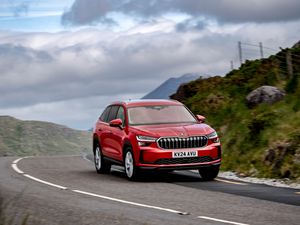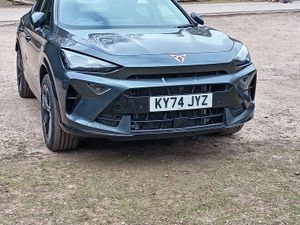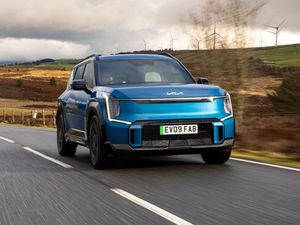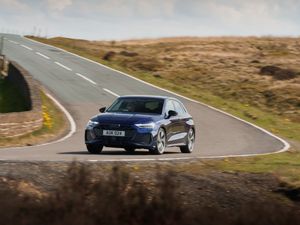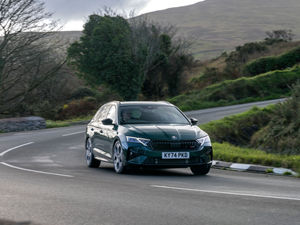UK Drive: Updated Subaru BRZ is still a fantastic B-road blaster but isn’t without flaws
Has a refresh given Subaru’s compact sports car a new lease of life? Ryan Hirons finds out.
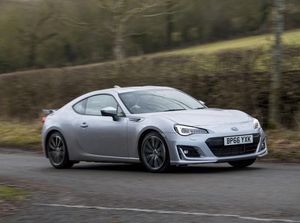
What is it?
The Subaru BRZ has been around for quite some time now, but in order to give the model a new lease of life, it’s had a refresh – along with its platform sibling, the Toyota GT86.
The updated machine doesn’t exactly revolutionise the original formula, with few mechanical changes, but Subaru hopes a bit of a nip and tuck will keep it relevant on today’s market.
Since being introduced in 2012, the BRZ has carved a name for being a real driver’s car, although flawed as a daily-use vehicle with many also yearning for more power from its ‘boxer’ engine.
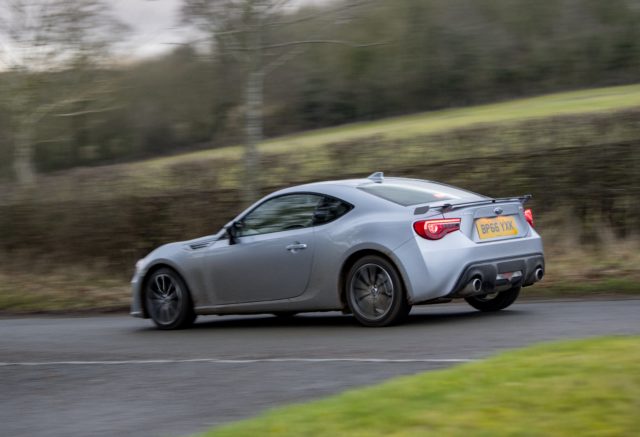
Don’t expect a revolution here, as changes to the updated Subaru BRZ are mostly aesthetic – but some of the fettling goes more than skin-deep.
Exterior changes include a revised front bumper to give the car a more aggressive appearance, full LED headlights, redesigned taillights, a new rear wing and fresh 10-spoke alloy wheels.
The engine has seen a few tweaks too, with new cylinder blocks, rocker arms and a revised camshaft in an effort to improve fuel economy and the overall driving experience – but don’t expect an increase in power (sorry, enthusiasts.)
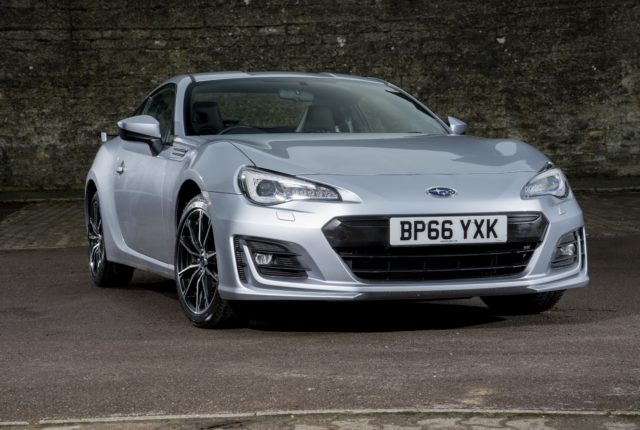
There’s no revolution under the bonnet, with the 2.0-litre four-cylinder boxer engine only lightly revised and here paired to the same six-speed manual gearbox found on the car from launch. This means 197bhp and 205Nm of torque, resulting in a 0-60mph time of 7.4 seconds and a 140mph top speed. As for efficiency, Subaru claims 36.2mpg on the combined cycle with CO2 emissions of 180g/km.
The engine is an utter joy to experience at high revs, delivering a serious punch and belching a deep roar when on its limit – the ever-crisp gearbox only heightens the fun. Sadly, anything below around 4,000rpm still remains its downfall. Some may cry for more horsepower, but we’d say a boost in torque would be more effective.
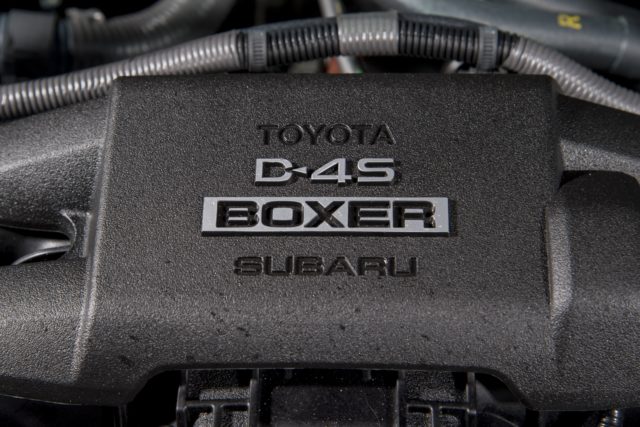
On a B-road, you’d still be hard-pressed to find anything that drives as well as the BRZ across the entire market – let alone just in the price range. Steering is incredibly direct, and well-tuned suspension gives the car excellent balance through the corners. Traction can be an issue, as the car still runs on tyres from a Toyota Prius as standard, but any slides that may occur are easily controlled.
While the raw fun driving experience remains, sadly too does the difficulty of using the Subaru as a town-friendly car. The weighty steering that lends well to an exciting drive means its heavy to control around town, and poor visibility combined with a large turning circle make it difficult to park or take on narrow streets.
The BRZ was never a bad looking car, with a sleek body planted onto a compact platform creating a pleasing package – but the facelift has certainly done no harm. The refreshed look brings it bang up to date, thanks to a more aggressive front fascia, LED headlights and contemporary rear light design.
It’s still far from subtle, though, so expect plenty of attention. The huge twin exhaust pipes remain along with a new rear wing. And, of course, it’s a Subaru performance car, so it’s not going to go unnoticed – especially in WR Blue Mica, made legendary by the firm’s rally cars of yesteryear.
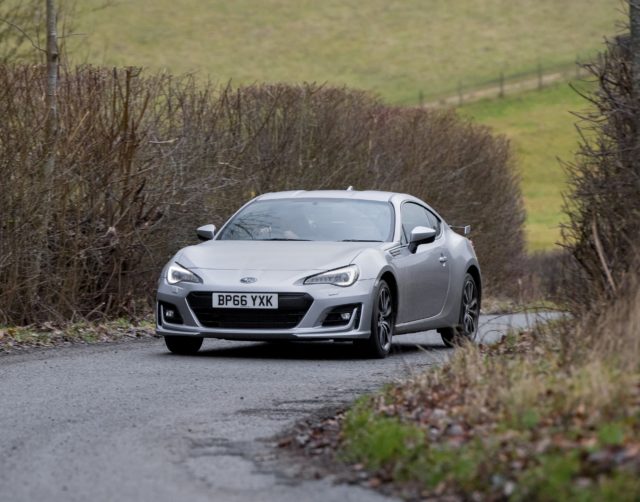
Imagine a budget car from the 90s and you’ll get an idea of what it’s like to be sat inside the Subaru BRZ.
It’s clear cabin quality has been sacrificed in an effort to provide something of a budget performance machine, with hard plastics, low-quality materials and an altogether aftermarket visual throughout. The steering wheel has a plastic-like feel and the gear stick is more akin to a child’s toy than something in a sports car.
Not everything is bad inside, though. The Alcantara bucket seats provide plenty of support and feel well-made, although they do become uncomfortable over longer distances. Boot space also comes in at a reasonable 243 litres, which is considerably more than the Mazda MX-5’s 150 litres, and there’s even two rear seats – although you’d struggle to fit anyone taller than a toddler in either.
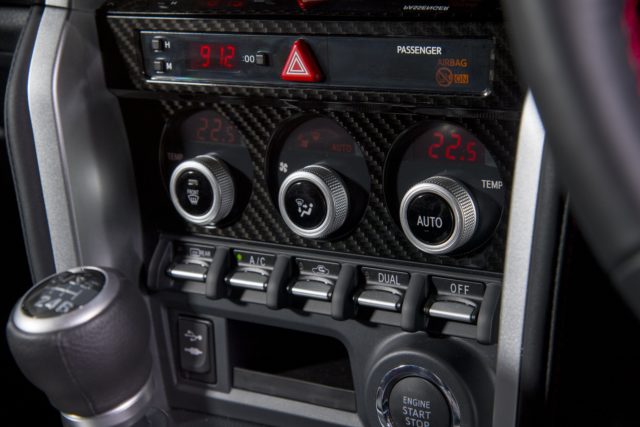
There’s just one trim level available on the new BRZ and that’s SE Lux. As a result of being the sole option, standard equipment is now plentiful.
Even before touching the options list, the Japanese sports car boasts automatic full-LED headlights, Alcantara heated bucket seats, keyless entry, cruise control, dual-zone air conditioning and a 6.2-inch infotainment system with Bluetooth connectivity. Satellite navigation is available as a £1,250 option.
On paper, this is a strong positive for the BRZ. Sadly though, the off-the-shelf Alpine infotainment system is a strong let down. It’s difficult to use, has applications for a lot of features not available on the BRZ as a result of being a unit designed for universal use and would seem out of place on any other car – although the aftermarket feel inside the BRZ means it blends in, and that’s no-good thing.
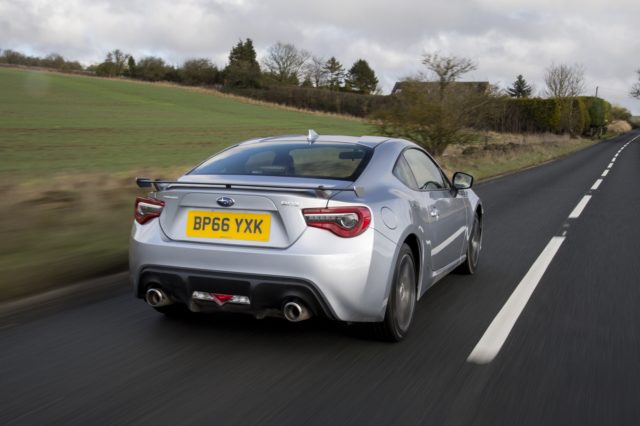
If you’re looking for a pure driving machine with a warranty and heated seats, the Subaru BRZ might just be the car for you. It’s one of the most involving cars on the market today, offering serious thrills when driving on its limit. A lack of low-end torque is still a sore point, though.
Sadly, this pursuit of a pure experience behind the wheel means it’s not well-suited as a daily driver. It’s thirsty, difficult to use around town, mostly impractical if you have even a small family and the interior is bargain basement. If you do decide to use it for the weekly shop though, you’ll have quite the fun journey to the supermarket.

